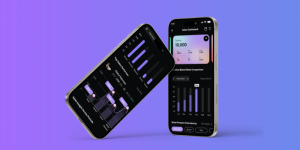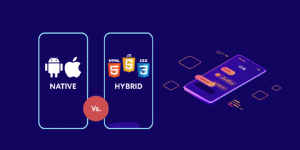Having a website is one thing, but ensuring it effectively converts visitors into customers or leads is another. Many businesses struggle with low conversion rates despite having a well-designed website. If your website is attracting traffic but not converting, it’s essential to identify and address the potential issues hindering your success. Here are some common reasons why your website might not be converting visitors, along with practical fixes you can implement to improve conversion rates.

1. Unclear Value Proposition
A value proposition is the promise of value that your product or service delivers to customers. If your website doesn’t clearly communicate what makes your business unique or why a visitor should engage with your brand, they may quickly leave without taking any action.
Fix:
Ensure that your value proposition is front and center. It should be clear, concise, and compelling. The headline on your homepage should clearly convey the benefit of your product or service, answering the key question: “What’s in it for me?” Consider adding a call-to-action (CTA) near the value proposition to encourage visitors to learn more or take the next step.
Example: If you run a technology consultancy like CBS Pakistan, your value proposition could emphasize how your expertise helps businesses streamline operations, improve efficiency, and stay ahead of the competition.
2. Poor User Experience (UX) Design
If your website’s design is cluttered, hard to navigate, or not user-friendly, visitors will quickly become frustrated and leave. A poor user experience can drastically lower conversion rates, as potential customers may find it difficult to locate what they need or complete their desired action.
Fix:
Simplify your website design, making sure it is easy to navigate. A clean, intuitive layout with clear menus and a well-organized structure will enhance user experience. Optimize your website for mobile devices, as more users are browsing and shopping on their phones. Ensure that your forms, checkout processes, and other conversion points are streamlined and easy to complete.
3. Slow Load Times
A slow-loading website can be a major deterrent to visitors. Research shows that even a one-second delay in page load time can lead to a 7% reduction in conversions. If your website is slow, visitors may leave before they even have a chance to engage with your content.
Fix:
Improve your website’s loading speed by optimizing images, minimizing code, and leveraging browser caching. You can also consider using a content delivery network (CDN) to speed up load times, especially if your audience is located in different parts of the world.
4. Lack of Trust Signals
Visitors need to feel confident that your website is secure and trustworthy before they make a purchase or submit personal information. Without visible trust signals such as security badges, testimonials, and reviews, visitors may hesitate to convert.
Fix:
Add trust signals such as SSL certificates (for secure browsing), customer reviews, testimonials, case studies, and recognized industry certifications. These elements help establish credibility and reassure visitors that they are making a safe, informed decision.
For example, if your business is offering services like CBS Pakistan, displaying client success stories or showcasing the companies you’ve worked with can help build trust and credibility.
5. Ineffective Calls-to-Action (CTAs)
If your CTAs are vague, difficult to find, or not compelling, visitors may not know what to do next. CTAs should guide users toward the action you want them to take, whether that’s signing up for a newsletter, requesting a demo, or making a purchase.
Fix:
Make sure your CTAs are prominent, actionable, and easy to find. Use action-oriented language such as “Get Started,” “Request a Quote,” or “Sign Up Today.” The CTA button should stand out from the rest of the page and be strategically placed in areas where visitors are most likely to take action, such as after a compelling offer or key information.
6. Not Focusing on Mobile Optimization
With an increasing number of users browsing and shopping on mobile devices, it’s crucial to ensure your website is fully optimized for mobile viewing. A website that isn’t mobile-friendly can lead to high bounce rates and low conversion rates, especially if users have to pinch, zoom, or struggle with navigation.
Fix:
Optimize your website for mobile devices. Ensure that it’s responsive and provides a smooth browsing experience on any screen size. This includes optimizing images, buttons, and text for mobile-friendly viewing and ensuring that the checkout process or any forms are easy to fill out on a smartphone.
7. Unfocused Content Strategy
Your website’s content should guide visitors through their decision-making process. If your content is unclear, too generic, or lacks focus on the user’s needs, visitors may not feel compelled to take action.
Fix:
Develop a content strategy that addresses your audience’s pain points, questions, and needs. Use high-quality, engaging content such as blog posts, videos, and infographics that educate and persuade visitors. Make sure your content is aligned with your business goals and encourages visitors to take the next step toward conversion.
8. No Clear Conversion Funnel
A conversion funnel is the process a visitor goes through on your website before taking the desired action, such as making a purchase or submitting a contact form. If your funnel is too complicated or unclear, visitors may get lost and fail to convert.
Fix:
Simplify and streamline your conversion funnel. Make sure the path to conversion is clear and easy to follow. Break it down into manageable steps and reduce friction by eliminating unnecessary fields or steps. Track and analyze user behavior to identify any obstacles in the funnel and fix them promptly.
9. Inadequate Analytics and Testing
Without tracking visitor behavior and conversion data, it’s difficult to know where your website is failing or succeeding. A lack of analytics can prevent you from making informed decisions about improvements.
Fix:
Implement website analytics tools such as Google Analytics to track user behavior and identify pages with high bounce rates or low conversion rates. Use A/B testing to experiment with different layouts, CTAs, and content to see what resonates best with your audience. Constantly refine and optimize your website based on the data you collect.
Conclusion
If your website isn’t converting visitors, there are several common issues that could be hindering your success. From unclear value propositions to slow load times and poor mobile optimization, addressing these problems is essential for improving conversion rates. By focusing on a user-friendly design, clear CTAs, and an optimized conversion funnel, you can increase the likelihood of turning website visitors into customers or leads.
At CBS Pakistan, we understand the importance of website optimization. As a company offering software development and consultancy services, we help businesses improve their online presence, ensuring better conversion rates through strategic digital solutions. If you’re struggling with your website’s performance, don’t hesitate to reach out to our expert team for tailored strategies that can boost your business’s success.


